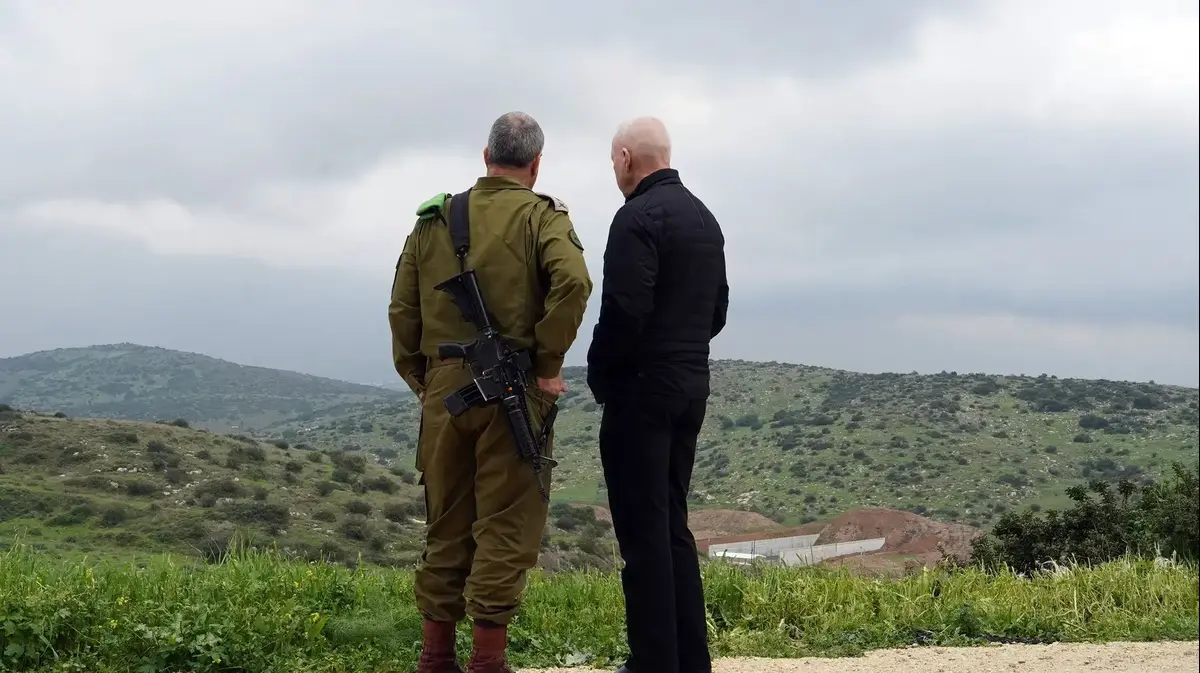1,300 kilometers from the Arctic Circle, on the island of Spitsbergen in the Norwegian archipelago of Svalbard, underground and bomb-proof, is what has been dubbed the chamber of the end of the world or Noah's ark of seeds .
Officially, it is called the World Seed Bank and a million varieties of 6,000 species from all climates and continents are stored there.
The goal: to ensure that humans can continue to produce food in the event of a disaster.
During the last century, according to data from the United Nations Food Organization, FAO, of 6,300 cataloged species of livestock breeds, only 1,300 have survived.
In the case of plant species, in the same period 75% of them have disappeared and two out of three are in danger of extinction.
On paper there are cataloged more than 400,000 species of plants called vascular, with roots, stems and leaves, of which only between 8,000 and 10,000 have been used over the centuries for food production.
However, the food supply basically comes from about 200 seeds and, of that number, only nine: sugar cane, corn, wheat, rice, potato, soybean, palm, beetroot and cassava account for two thirds of world food production. from agricultural activity.
This strong dependence on a few species —which are also linked to a few multinational groups—, together with the progressive disappearance of the biodiversity sustained by the thousands of traditional species, encouraged the concern in the eighties of international organizations such as the FAO or the Bank World Conference on the need to protect the availability of seeds to try to ensure a food supply for a world population that currently stands at 8,000 million people, but which in 2050 is expected to be 10,000 million.
In this scenario, the FAO promoted the establishment of a world seed bank where all the institutions on the planet, some 1,500, can store a backup copy of their varieties and have the possibility of accessing it whenever they need it.
In this way,
José Esquinas, an agronomist and genetics expert, joined FAO in 1978, where he held different positions for thirty years as secretary of the Commission on Genetic Resources.
He was one of the promoters of the initiative to build a bank for the protection of seeds and in defense of biodiversity.
The idea had many boyfriends.
Spain bid to host this project, but finally in 2008 it was decided that its construction be done on an island in the Norwegian archipelago of Svalbard.
Two centuries
The new Noah's Ark of seeds aims to ensure their useful permanence for up to two centuries later and is located in the space of an old mine on a mountain some 150 meters deep and 130 meters above sea level, with a humidity and constant low temperature over an area of about 1,000 square meters divided into different chambers, with hardly any light.
The seeds, about 500 per batch, are kept in envelopes with several layers of aluminum foil, stored in boxes where their characteristics are indicated.
The bench is owned by the Norwegian State and involved an investment of nine million euros, to which another 20 million were added to eliminate humidity, plus one million euros for its annual maintenance.
It has the financial support of FAO,
For security reasons, the bank has been built to survive volcanic eruptions and earthquakes of up to 10 degrees on the Richter scale.
The facility has reinforced steel tunnels, a constant temperature of between -3° and -18° degrees Celsius to keep the seeds for two centuries, after a process of dehydration of them down to 5% humidity, a process that some cannot resist. species such as acorns or chestnuts.
The bank space is declared a demilitarized zone.
Since its constitution, it has received in deposit more than a million varieties from 86 countries and institutions corresponding to almost 6,000 species.
In general, depositors have not come to the rescue because they have suffered some type of problem in the availability of their seeds.
The only institution that was forced to recover seeds was the International Center for Research on Agriculture in Dry Areas, ICARDA, due to the destruction of 148,000 varieties that it had in its warehouse in Aleppo (Syria) as a result of the war.
The entity had sent to Svalbard an 80% duplicate of its seeds.
In 2015, ICARDA withdrew 50,000 varieties for planting and, once collected and replaced at its own bank, sent another 50,000 seeds back to the center.
Esquinas recalls the "threat" posed by the loss of biodiversity in the world due to lack of use of species and varieties that have adapted to environmental conditions and warns about the risks posed by the fact that today the food supply is linked to the commercial sale of no more than 150 seeds, which qualifies as a real "barbarity".
In his opinion, they are very uniform and stable varieties that better withstand the use of pesticides, insecticides or agrochemicals, but, for that same reason, the seed can be attacked by the same disease, cold or drought, and all they die, something that does not happen with the other varieties that have been adapting to climate change.
In this context,
Spain puts a thousand varieties in safekeeping
Although the actions in Spain to avoid the loss of varieties and the recovery of seeds date back to the end of the 19th century when phylloxera decimated the vineyards, the most important strategy in this direction dates back to the 1970s and 1980s with the actions of the Institute Nacional de Investigaciones Agrarias, INIA, together with the Consejo Superior de Investigaciones Científicas, CSIC, the result of which is more than thirty banks of whose seeds the national bank has a copy in the figure of the Plant Genetic Resources Center (CRF).
In its mission of storing, recovering and improving seeds, the CRF has a fund of some 44,000 varieties.
Since March of this year, Spain has deposited more than a thousand seeds in Svalbard, of which 300 correspond to winter cereals, 114 are wheat,

/cloudfront-eu-central-1.images.arcpublishing.com/prisa/7EG72OVEOZDRPA45I3SS2D5MCE.jpg)






